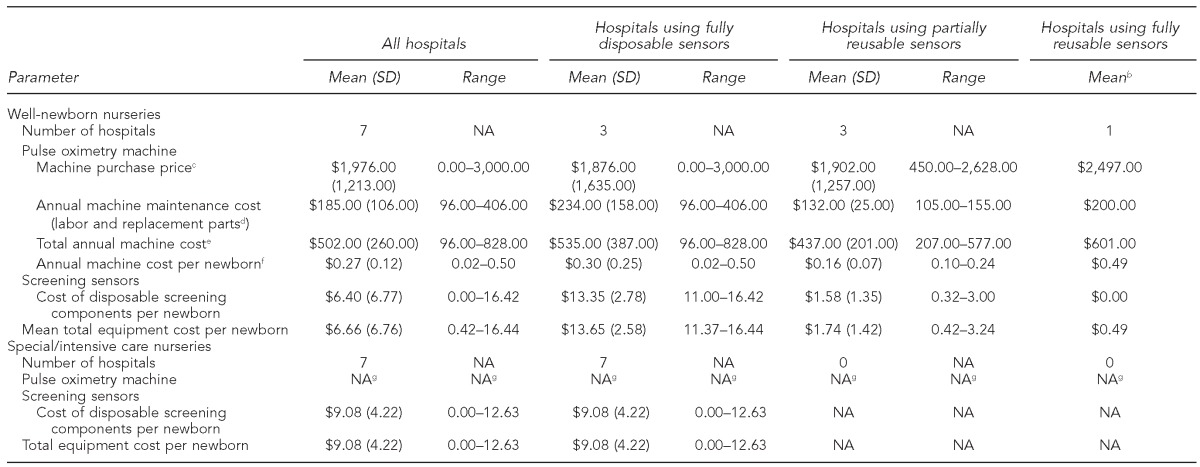Table 2.
Estimateda hospital equipment costs per newborn screened for CCHD at seven New Jersey based on observed screening times and hospital administrators' surveys, by nursery type and equipment type: January–February 2012

All estimates presented as 2011 values based on: Bureau of Labor Statistics (US). Producer price index industry data: hospitals. PCU622. 2011 [cited 2012 May 18]. Available from: URL: http://www.bls.gov/data/#prices
bSDs and ranges not included because only one hospital used fully reusable sensors.
cMachines purchased in earlier years were inflated to 2011 prices. Includes one hospital that received free pulse oximetry machines for the well-newborn nursery with an accompanying contract with the same vendor to purchase disposable screening sensors.
dThe cost of replacement parts includes cords and reusable sensors.
eAssumes a seven-year useful life for pulse oximetry machines in well-newborn nurseries, which was the mean reported among the hospitals in the sample (range: 5–10 years). The amortized cost of the equipment was estimated using a discount rate of 3% and the method recommended in: Drummond MF, Sculpher MJ, Torrance GW, O'Brien BJ, Stoddart GL. Methods for the economic evaluation of health care programmes. 3rd ed. Oxford: Oxford University Press; 2005. The amortized equipment cost was summed with annual machine maintenance costs reported in the table to produce the estimated total annual machine cost.
fThe annual machine cost per newborn is the total annual machine cost divided by 93.3% of the 2010 birth census count for each hospital from the New Jersey Department of Health (birth counts are not reported to protect the anonymity of hospitals that participated in the evaluation), based on a national estimate that 6.7% of newborns are admitted to special/intensive care nurseries (see: Osterman MJ, Martin JA, Mathews TJ, Hamilton BE. Expanded data from the new birth certificate, 2008. Natl Vital Stat Rep 2011 Jul 27;59[7]:1-28). This approach assumes that hospitals needed to purchase one additional pulse oximetry machine for CCHD screening in the well-newborn nursery.
gAll hospitals observed in the evaluation used existing vital signs equipment in special/intensive care nurseries to take pulse oximetry readings for CCHD screening.
CCHD = critical congenital heart disease
SD = standard deviation
NA = not applicable
